Exploring the Cultural Significance of the Youguo Temple Iron Pagoda
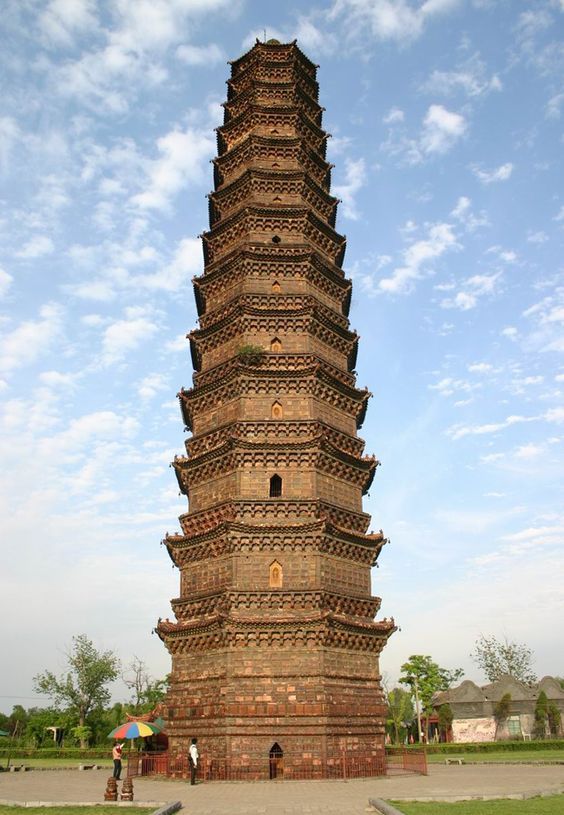
An Essential Guide to Visiting Youguo Temple Iron Pagoda
In This Guide
- An Essential Guide to Visiting Youguo Temple Iron Pagoda
- The Rich History and Legends of Youguo Temple Iron Pagoda
- Main Highlights: What You Absolutely Can’t Miss
- Planning Your Visit: A Practical Guide
- Tickets: Prices, Booking, and Tips
- How to Get There: A Complete Transportation Guide
- Local Cuisine and Accommodation Nearby
- Frequently Asked Questions
- Final Thoughts on Your Trip
Nestled in the historic city of Kaifeng, Henan province, lies a remarkable testament to China’s architectural and spiritual heritage: the Youguo Temple Iron Pagoda. This stunning pagoda, rising majestically to 55 meters, is a symbol of resilience and artistry, reflecting the ingenuity of the Song dynasty (960–1279 CE). Originally constructed in 1049 to replace a wooden pagoda that tragically succumbed to fire just five years earlier, the Iron Pagoda stands as a masterpiece of glazed brick architecture—its reddish-brown hue giving it the name “Iron,” although it is not made of iron at all.
A Historical Landmark
The Youguo Temple complex was once a grand Buddhist monastery featuring over 280 halls and 24 monasteries, serving as a significant cultural and scholarly hub during the Northern Song dynasty. It was here that emperors attended ceremonies and civil service exams were held, drawing scholars from across the empire. Today, despite enduring natural disasters—including floods and earthquakes—the Iron Pagoda remains remarkably intact, a testament to the durability of its design and materials.
Architectural Marvel
The pagoda’s intricate details are a feast for the eyes, showcasing more than 1,600 carvings of Buddhist figures, mythical beasts, and floral motifs. Visitors will find themselves captivated by the spiral staircase that leads to its interior, where stunning frescoes depicting scenes from the classic novel Journey to the West can be found.
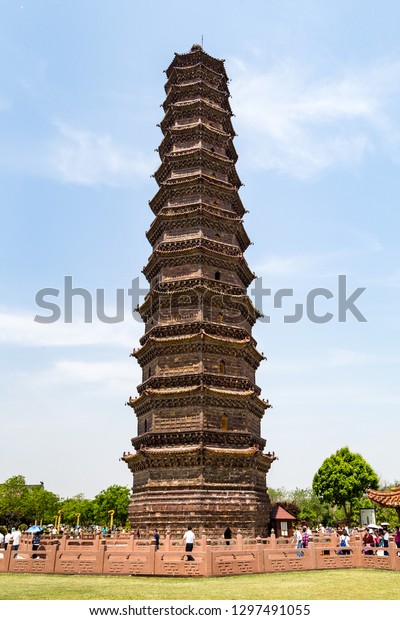
Youguo Temple Iron Pagoda.
Visiting Tips
As you plan your visit to this cultural gem, consider the following:
- Best Time to Visit: The ideal time to explore the Iron Pagoda is during the spring and autumn months, when the weather is mild and the temple grounds are adorned with blooming flowers.
- Accessibility: The pagoda is located within the northeastern part of Kaifeng and can be reached by public transportation or taxi. Ensure to approach from the north side, where the steps lead up to the pagoda’s entrance.
- Respect the Space: As a functioning temple, visitors are encouraged to show respect for the site, observing quietness and decorum while exploring the sacred grounds.
Visiting the Youguo Temple Iron Pagoda offers a unique glimpse into the rich tapestry of Chinese history and culture. Whether you are an architecture enthusiast, a history buff, or a spiritual seeker, this remarkable pagoda will undoubtedly leave a lasting impression on your journey through China.
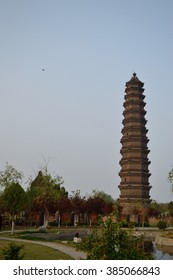
Youguo Temple Iron Pagoda.
The Rich History and Legends of Youguo Temple Iron Pagoda
Nestled in the heart of Kaifeng, Henan province, the Youguo Temple Iron Pagoda stands as a testament to the ingenuity and resilience of Chinese architecture. This iconic structure, built in 1049 during the Northern Song dynasty, is a remarkable example of the artistic and engineering prowess of its time.
A Glimpse into History
The Youguo Temple complex was originally a grand assembly of 280 halls and 24 monasteries, flourishing during an era when Kaifeng served as the imperial capital. The temple was not only a spiritual center but also a crucial venue for the imperial examinations, attracting scholars and officials from across the empire.
The Original Pagoda
Before the Iron Pagoda, a magnificent wooden structure known as the Lingwei Pagoda reigned over the temple grounds. This octagonal tower, standing 13 stories tall, was constructed under the guidance of the famed architect Yu Hao. However, tragedy struck in 1044 when lightning struck the wooden pagoda, reducing it to ashes. The disaster prompted Emperor Renzong’s swift decision to commission a new pagoda, one designed to withstand the elements.
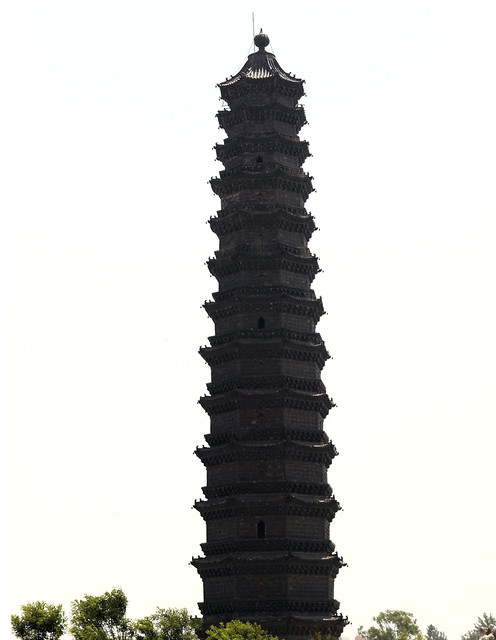
Youguo Temple Iron Pagoda.
The Birth of the Iron Pagoda
The Iron Pagoda, crafted from glazed bricks in hues of red, brown, blue, and green, was completed in 1049. Its name stems from the reddish-brown color that gives it an iron-like appearance from a distance. Rising to 55 meters, the pagoda features a solid core and an intricate inner spiral staircase, allowing light and air to flow freely through its openings.
Architectural Marvel
This architectural wonder is not only significant for its height but also for its aesthetic details. The exterior boasts over 1,600 intricate carvings, depicting Buddhist figures, mythical creatures, and floral motifs. The craftsmanship is exemplified in the use of more than fifty different types of bricks and the 104 bells that ring softly in the wind under its eaves. The sheer artistry and complexity of the pagoda’s design make it a remarkable artifact of Chinese architectural heritage.
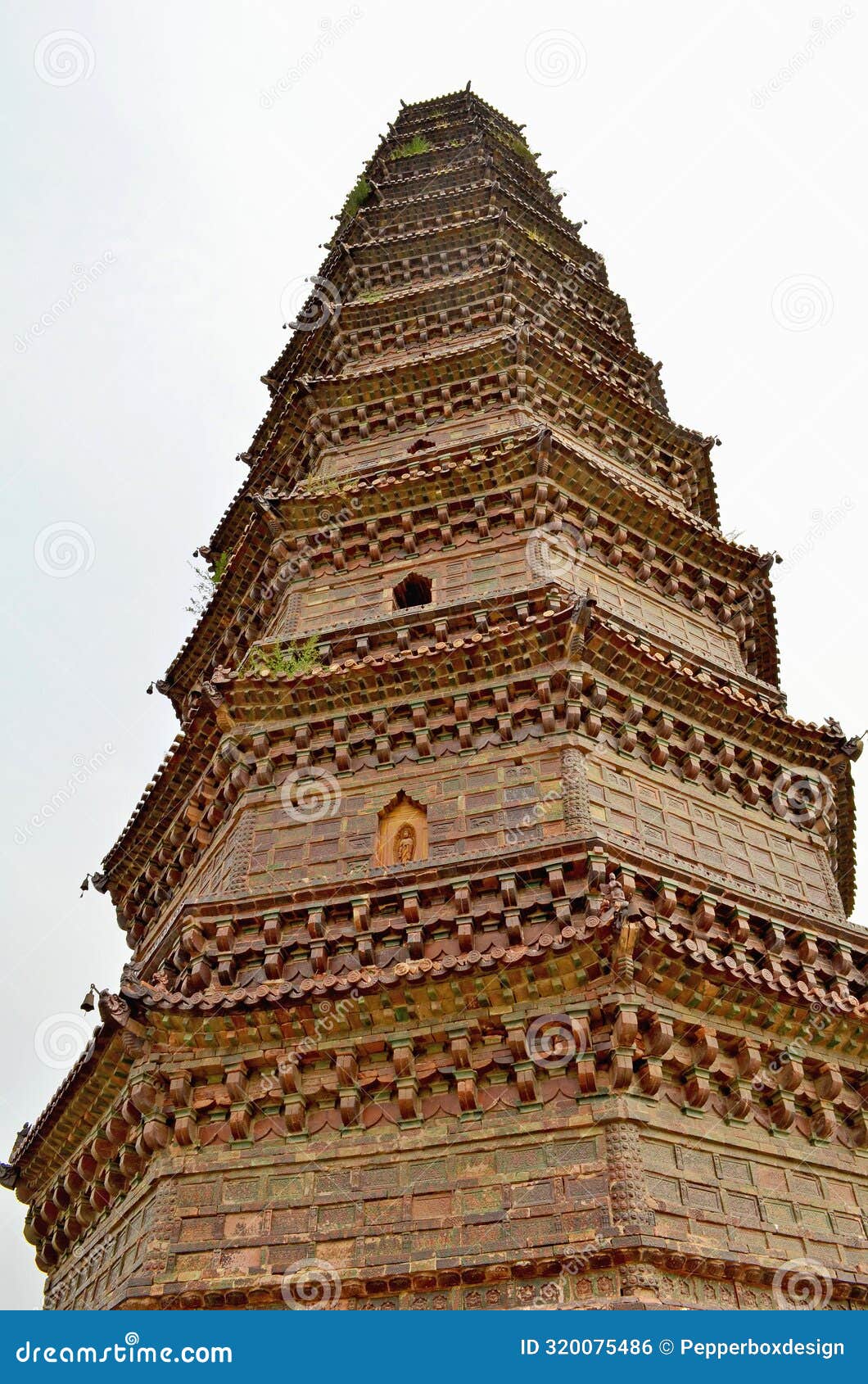
Youguo Temple Iron Pagoda.
Surviving the Test of Time
Despite facing numerous calamities—including 38 earthquakes and severe flooding—the Iron Pagoda has endured for nearly a millennium. Notably, in 1847, when the Yellow River overflowed, much of the Youguo Temple complex succumbed to the floods, but the pagoda stood firm, a silent witness to the trials of nature and time.
Legends and Cultural Significance
Beyond its structural integrity, the Iron Pagoda is steeped in local legends. It is said that the pagoda houses frescos depicting scenes from the Chinese classic “Journey to the West,” which adds a layer of cultural richness to its history. These artistic representations of folklore and mythology draw visitors not only for their beauty but also for their narrative significance, connecting the past with the present.

Youguo Temple Iron Pagoda.
Conclusion
The Youguo Temple Iron Pagoda is more than just a historical monument; it embodies the spirit of resilience, artistry, and cultural heritage of China. For international travelers, exploring this magnificent pagoda offers a unique glimpse into the rich tapestry of Chinese history, reminding us of the enduring legacy of the Northern Song dynasty and the timeless beauty of its architectural achievements. Whether you are an architecture enthusiast, a history buff, or a curious traveler, the Iron Pagoda invites you to discover its fascinating story and the legends that continue to inspire generations.
Main Highlights: What You Absolutely Can’t Miss
When visiting the Youguo Temple and its iconic Iron Pagoda in Kaifeng, Henan Province, there are several highlights that should be on every traveler’s itinerary. Here’s what you absolutely can’t miss:
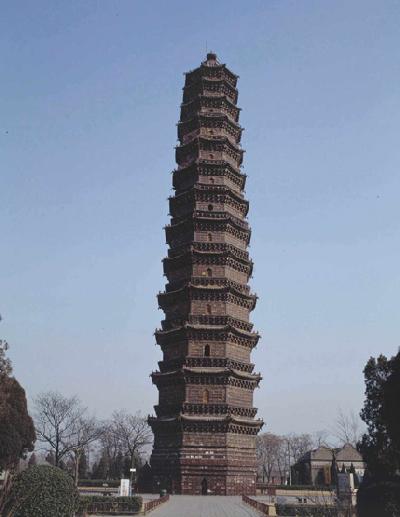
Youguo Temple Iron Pagoda.
The Iron Pagoda
Architectural Marvel: Standing at an impressive 54.66 meters, the Iron Pagoda is a stunning example of Song dynasty architecture. Constructed in 1049 as a replacement for a wooden pagoda that was destroyed by lightning, this pagoda is made of intricately designed glazed bricks. Its reddish-brown hue gives it the appearance of iron from a distance, hence its name.
Artistic Details: The pagoda features over 1,600 exquisite carvings depicting Buddhist figures, mythical creatures, and floral patterns. As you explore, be sure to look for the intricate designs of lions, dragons, and musicians that adorn the structure.
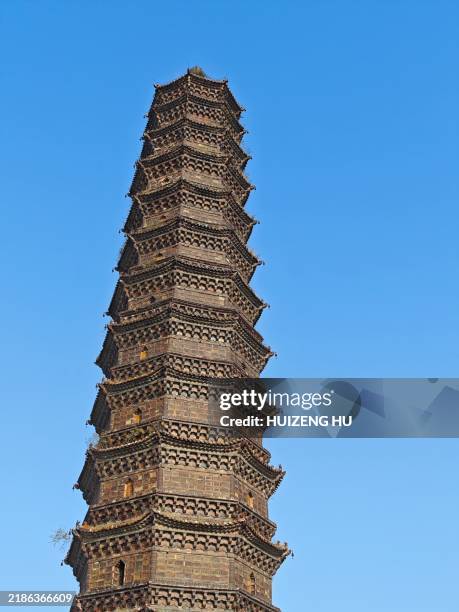
Youguo Temple Iron Pagoda.
Spiritual Atmosphere: The interior of the pagoda houses frescos from the renowned Chinese classic, Journey to the West. These works of art, complemented by the gentle sounds of 104 bells that chime in the wind, create a serene and contemplative environment.
The Temple Grounds
Historic Significance: Once a grand complex with 280 halls and 24 monasteries, Youguo Temple was a vital cultural and spiritual center during the Northern Song dynasty. It served as a venue for imperial examinations, attracting scholars from across the empire. While much of the original structure has been lost to time, the remaining elements reflect its historical grandeur.
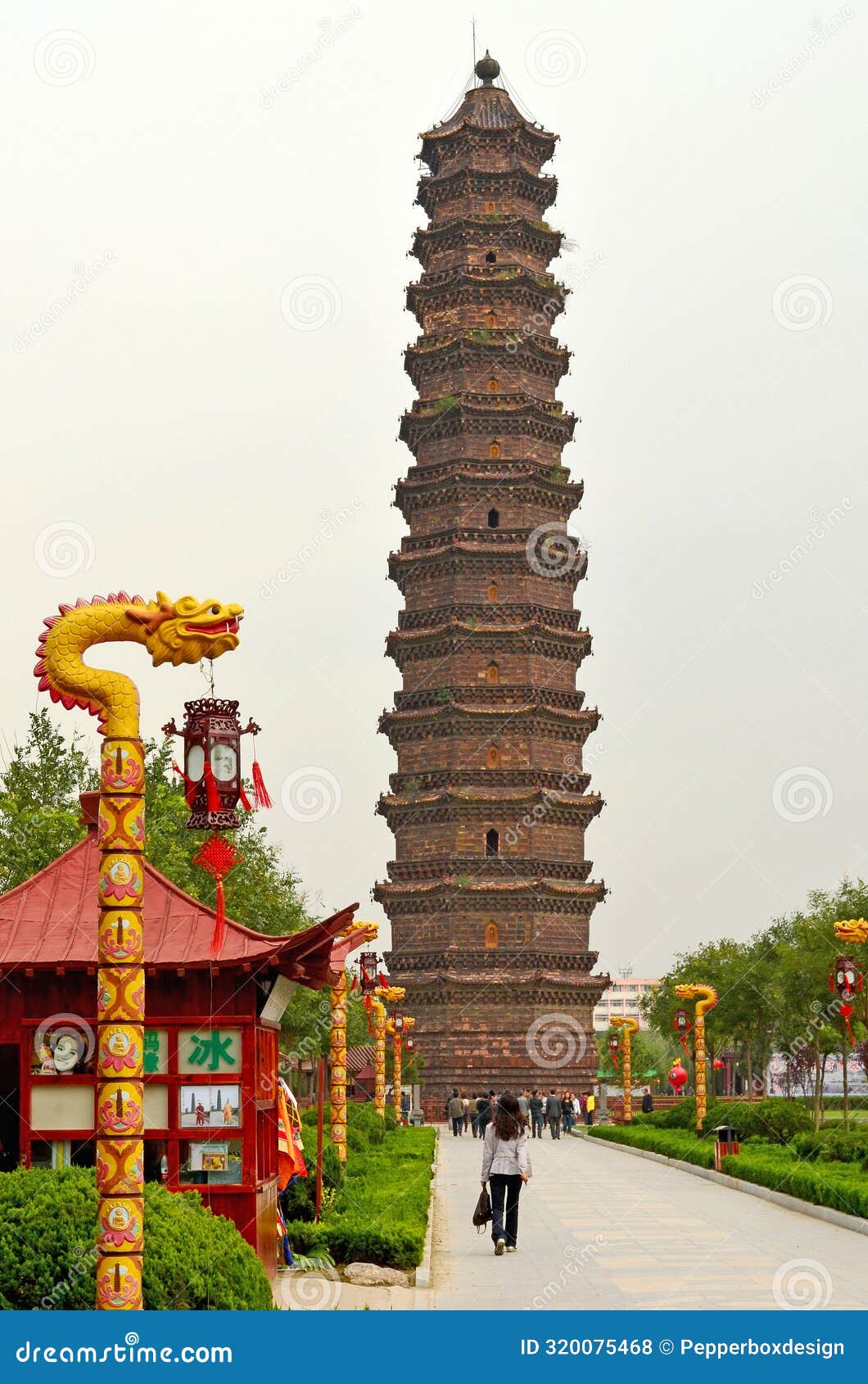
Youguo Temple Iron Pagoda.
Scenic Walkways: The temple grounds are beautifully landscaped, offering visitors tranquil pathways lined with trees and traditional architecture. This is an ideal spot for leisurely strolls to soak in the history and spirituality of the site.
The Surrounding Area
Cultural Context: Kaifeng, one of China’s Eight Ancient Capitals, is rich in history. As the capital of the Northern Song dynasty, it was a hub of political, economic, and cultural activity. Before or after visiting the temple, take time to explore other historical sites in Kaifeng, such as the Dragon Pavilion and the Daxiangguo Temple.
Local Cuisine: Don’t miss the chance to sample local delicacies during your visit. Kaifeng is renowned for its unique dishes, including the famous Water Banquet, which features a variety of soups and stews that reflect the flavors of Henan cuisine.

Youguo Temple Iron Pagoda.
Practical Information
- Accessibility: The Iron Pagoda is situated at the northeastern corner of Kaifeng. Approach is possible through the steps leading up from the north side.
- Visiting Hours: Check local listings for the current opening hours and any special events that may enhance your visit.
- Best Time to Visit: The pagoda is particularly stunning at sunset, when the golden light highlights its intricate features and creates a magical atmosphere.
Conclusion
A visit to Youguo Temple and the Iron Pagoda is not just about witnessing architectural beauty; it’s an immersion into the rich tapestry of Chinese history and culture. Whether you are an architecture enthusiast, a history buff, or someone seeking spiritual solace, the Iron Pagoda stands as a testament to the resilience and artistry of the past. Don’t forget your camera to capture the stunning details and serene surroundings of this remarkable site!
Planning Your Visit: A Practical Guide
Discovering the Iron Pagoda at Youguo Temple: A Visitor’s Guide
Nestled in the historic city of Kaifeng, Henan province, the Youguo Temple Iron Pagoda stands as a testament to the architectural brilliance of the Northern Song Dynasty. This iconic structure, renowned for its unique design and rich history, is a must-visit for anyone interested in Chinese culture and history. Here’s everything you need to know to make the most of your visit.
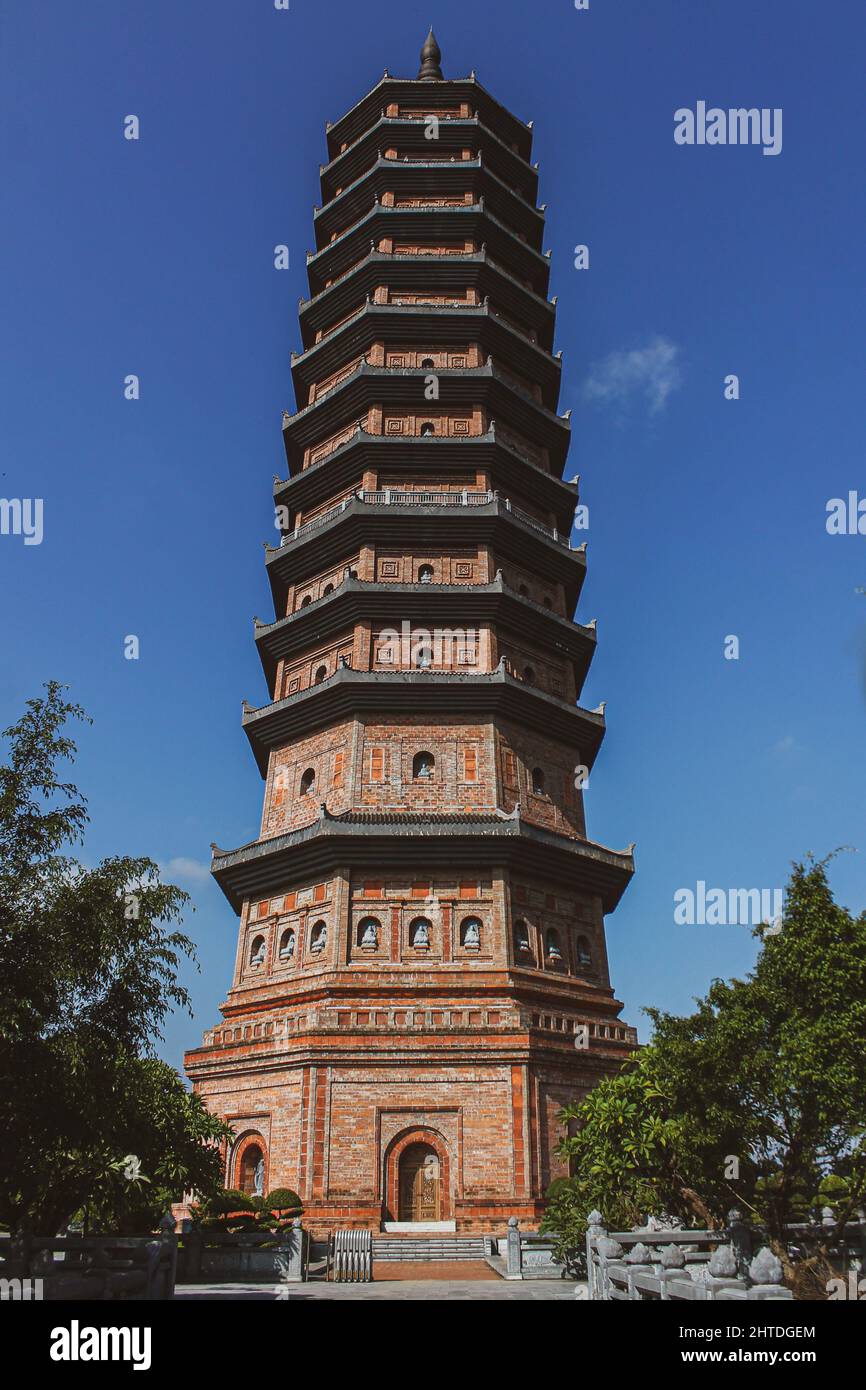
Youguo Temple Iron Pagoda.
Getting There
Location: The Iron Pagoda is situated in the northeastern part of Kaifeng. The temple complex is easily accessible from the city center.
Transport Options:
– By Train: Kaifeng has a railway station with connections to major cities in China. From the station, you can take a taxi or local bus to reach the temple.
– By Bus: Several local buses run routes that include stops near Youguo Temple. Check local schedules for the most convenient options.
– By Taxi: Taxis are readily available throughout the city. It’s advisable to have the name of the temple written in Chinese for ease of communication.
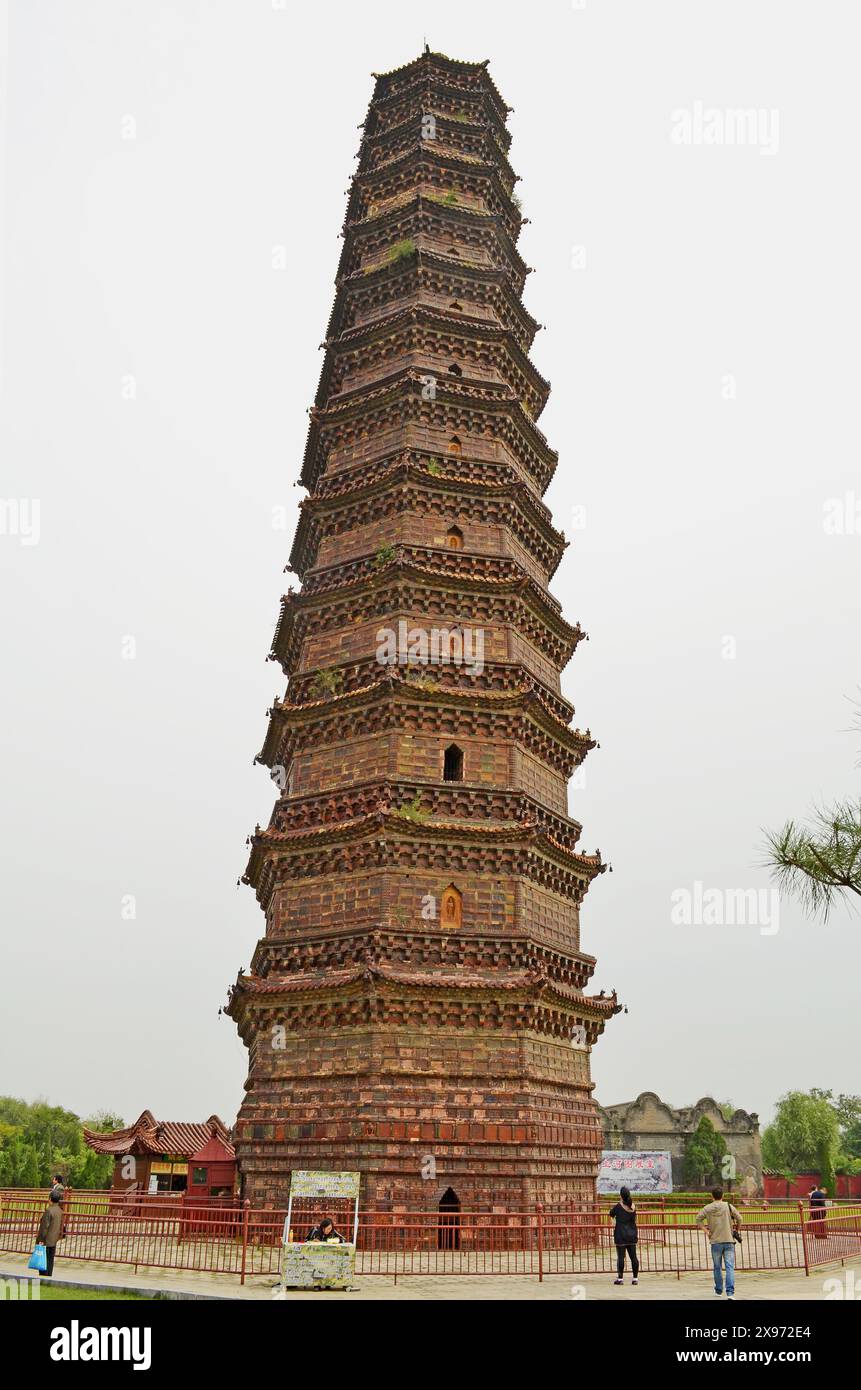
Youguo Temple Iron Pagoda.
Opening Hours
- Daily Opening: The temple complex is generally open from 8:00 AM to 5:00 PM. However, hours may vary during public holidays, so checking in advance is wise.
Admission Fees
- Entrance Fee: There is a small entrance fee to access the temple grounds. Ticket prices may vary, so inquire at the entrance for the most up-to-date information.
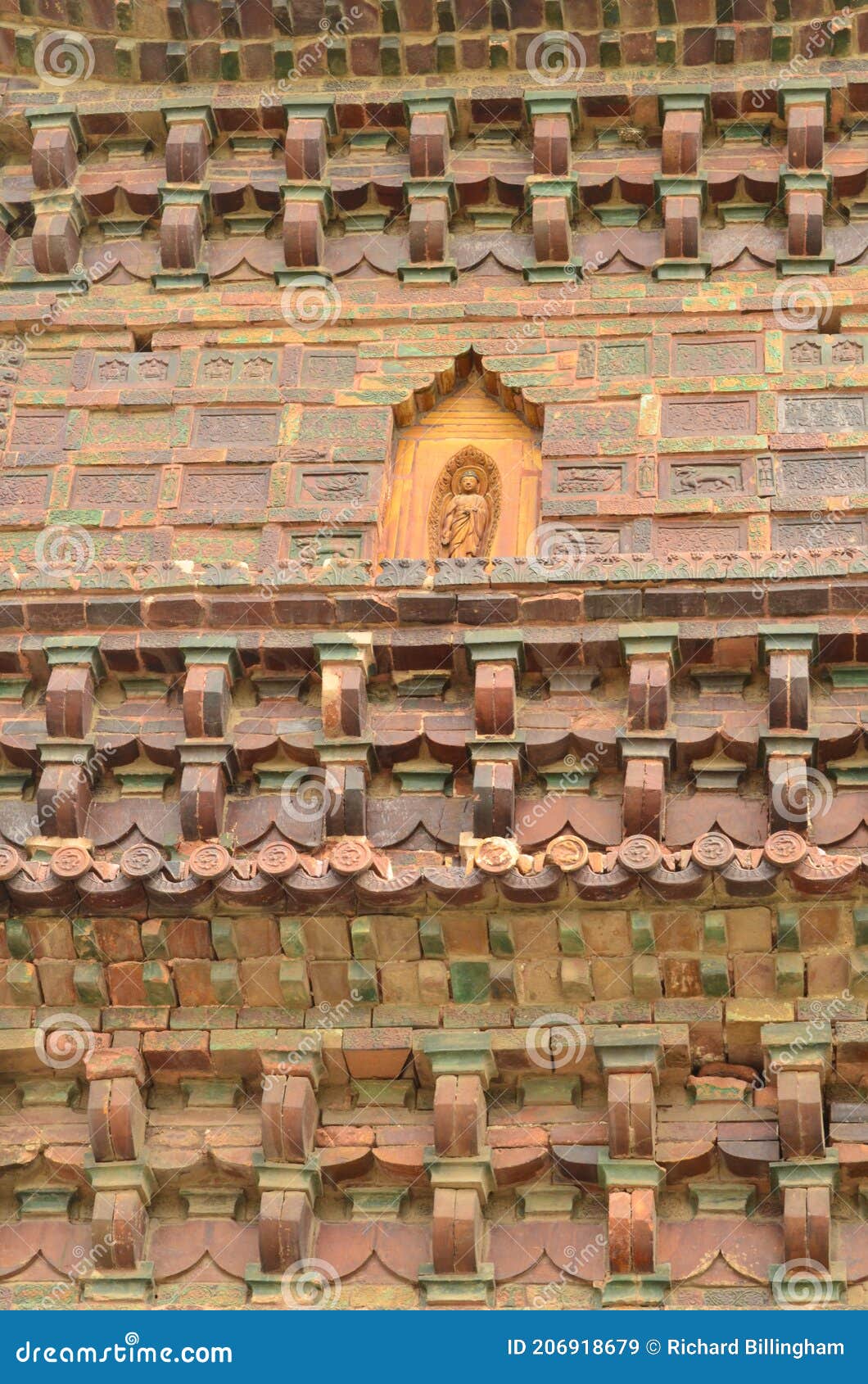
Youguo Temple Iron Pagoda.
What to See
The Iron Pagoda:
– Height: Standing at approximately 55 meters, this octagonal brick tower is not made of iron but rather features beautifully glazed bricks that give it a reddish-brown hue resembling iron.
– Architecture: The pagoda exhibits intricate craftsmanship with over 1,600 carvings depicting Buddhist figures, mythical creatures, and floral patterns. Don’t miss the 104 bells under the eaves that chime gently in the wind.
Temple Grounds:
– Originally, Youguo Temple was a vast complex featuring 280 halls and 24 monasteries, reflecting its historical significance as a cultural and educational center during the Song Dynasty. Although many structures have succumbed to the passage of time, the remaining halls are worth exploring.
Cultural Artifacts: Inside the pagoda, observe the frescos depicting scenes from the famous Chinese novel, Journey to the West. This artistic representation adds a layer of cultural depth to your visit.
Tips for Visitors
- Photography: The pagoda and temple grounds offer stunning photo opportunities. Early morning or late afternoon provides the best natural light.
- Dress Code: As a place of worship, dress modestly. Comfortable shoes are recommended for walking through the temple and climbing the pagoda if accessible.
- Guided Tours: Consider joining a guided tour for a more in-depth understanding of the temple’s history and architecture. Many local guides are knowledgeable and can provide fascinating insights.
Nearby Attractions
While in Kaifeng, take time to explore other nearby historical sites:
– Dragon Pavilion: A beautiful garden and pavilion with stunning views of the city.
– Daxiangguo Temple: Another significant Buddhist temple nearby, rich in history.
– Millennium City Park: A cultural theme park that recreates scenes from ancient Kaifeng.
Conclusion
A visit to the Youguo Temple Iron Pagoda is more than just a sightseeing trip; it’s an immersive experience into the heart of Chinese history and architecture. With its breathtaking design and deep cultural significance, the Iron Pagoda is sure to leave a lasting impression on any traveler seeking to understand the rich tapestry of China’s past. Don’t forget to take a moment to enjoy the serenity of the temple grounds, reflecting on the centuries of history that have unfolded around this iconic structure.
Tickets: Prices, Booking, and Tips
Visiting Youguo Temple Iron Pagoda: Ticket Information and Tips
When planning your visit to the Youguo Temple Iron Pagoda in Kaifeng, it’s essential to be well-informed about ticket prices, booking procedures, and helpful tips to enhance your experience at this remarkable historical site.
Ticket Prices
- General Admission: Approximately ¥20 (RMB) per person.
- Discounted Tickets: Students and seniors may be eligible for discounted rates, generally around 50% off the general admission price. Make sure to bring valid identification to avail of these discounts.
- Group Rates: If you are traveling with a large group (usually 20 or more), inquire about group rates, which can provide additional savings.
Booking Information
- On-Site Purchase: Tickets can be purchased directly at the entrance of the Youguo Temple complex. It’s advisable to arrive early, especially during peak tourist seasons, to avoid long queues.
- Online Booking: Some travel platforms offer the option to book tickets online. This can be a convenient option to secure your entry in advance and save time on the day of your visit.
- Guided Tours: Consider booking a guided tour that includes admission to the Iron Pagoda. This often provides in-depth historical insights and enriches your experience.
Visiting Hours
- Opening Hours: The Youguo Temple Iron Pagoda typically opens from 8:00 AM to 6:00 PM. However, hours may vary seasonally or during holidays, so it’s wise to check ahead of your visit.
Tips for Your Visit
- Best Time to Visit: Early morning or late afternoon is ideal for visiting, as the crowds are smaller, and the lighting is perfect for photography.
- Dress Comfortably: The temple grounds involve some walking, so wear comfortable shoes. Respectful attire is also recommended since it is a religious site.
- Explore the Surroundings: Beyond the Iron Pagoda, the temple complex is home to other historical structures and beautiful gardens. Allow yourself time to wander and soak in the serene atmosphere.
- Photography: The intricate details of the pagoda and surrounding architecture make for stunning photographs. Just be mindful of any restrictions on photography inside specific areas.
- Local Cuisine: After your visit, explore the nearby dining options to enjoy local Henan cuisine. Dishes such as Hulatang (spicy peppery soup) and Water Banquet are highly recommended.
By planning your visit to the Youguo Temple Iron Pagoda with this information in mind, you can ensure a smooth and enriching experience as you explore one of China’s architectural treasures.
How to Get There: A Complete Transportation Guide
Getting to Youguo Temple Iron Pagoda
Visiting Youguo Temple and its magnificent Iron Pagoda is an immersive journey into China’s rich historical tapestry. Located in the northeastern corner of Kaifeng, Henan province, this site is accessible via various modes of transportation, making it convenient for international travelers to explore this architectural gem that dates back to the Northern Song Dynasty.
Arriving in Kaifeng
By Air:
– Nearest Airports:
– Zhengzhou Xinzheng International Airport (CGO): Located about 70 kilometers from Kaifeng, this is the main international airport serving the area. It offers connections to major cities in China and some international destinations.
– Kaifeng Airport: While smaller and catering primarily to domestic flights, it may offer convenient options depending on your travel plans.
Transportation from the Airport:
– Airport Shuttle: Direct shuttles from Zhengzhou Airport to Kaifeng are available, taking approximately 1.5 hours.
– Taxi: Taxis can be found at the airport; the ride to Kaifeng takes around 1 to 1.5 hours depending on traffic.
– Train: For those looking for a more scenic route, you can take an airport shuttle to Zhengzhou East Railway Station and then catch a train to Kaifeng.
Getting Around Kaifeng
Once in Kaifeng, there are several options to reach the Youguo Temple Iron Pagoda:
By Public Transport:
– Bus: Local buses are a budget-friendly option. You can take Bus No. 2 or No. 7 directly to the Youguo Temple stop. Buses run frequently, making it a convenient choice for travelers.
By Taxi or Ride-Hailing Services:
– Taxis are widely available throughout the city and are relatively inexpensive. A taxi ride from the city center to Youguo Temple should take about 15-20 minutes.
– Ride-hailing apps like Didi Chuxing are also popular and can be a convenient way to get around.
By Bicycle:
– For the more adventurous, renting a bicycle can be a delightful way to explore Kaifeng’s scenic streets while making your way to Youguo Temple. Several bike rental stations are available, and the city is relatively flat, making it conducive for cycling.
Visiting Youguo Temple Iron Pagoda
Upon reaching Youguo Temple, you will be captivated not only by the striking Iron Pagoda itself but also by the surrounding temple grounds, rich in history and tranquility. The temple is open to visitors, and guided tours are often available, offering insights into its architectural marvels and cultural significance.
Admission Fees:
– Be sure to check the current admission fees and opening hours, as they may vary seasonally.
Tips for Travelers
- Language: While Mandarin is the primary language, you may find English-speaking guides at the temple. It’s helpful to have a translation app handy for communication.
- Best Time to Visit: Spring (April to June) and autumn (September to November) are ideal for pleasant weather and fewer crowds.
- Dress Code: As a place of worship, modest attire is recommended. Comfortable shoes are advised for exploring the temple grounds.
Whether you are a history buff or simply looking to experience the beauty of ancient Chinese architecture, Youguo Temple and its Iron Pagoda await your discovery. With these transportation tips, your journey to this remarkable site will be smooth and enjoyable.
Local Cuisine and Accommodation Nearby
Visiting Youguo Temple and its iconic Iron Pagoda is not just a journey into the depths of Chinese history and architecture, but also a delightful opportunity to savor the rich culinary traditions of Kaifeng. Here’s a guide to local cuisine and nearby accommodations that will enhance your experience.
Culinary Delights of Kaifeng
Kaifeng is renowned for its unique culinary offerings, particularly its Henan cuisine, characterized by its use of wheat-based dishes and a variety of flavors.
-
Hulatang (胡辣汤): A spicy and tangy soup made from a variety of ingredients, including noodles, vegetables, and often a protein like beef or chicken. It’s a beloved breakfast item among locals.
-
Kaifeng Dumplings (开封包子): These steamed buns are filled with a mixture of meat and vegetables, offering a warm and satisfying snack or meal option.
-
Water Banquet (水席): A traditional multi-course meal originating from Kaifeng, featuring an array of dishes presented in a unique way, often incorporating both hot and cold dishes to create a refreshing dining experience.
-
Crispy Pancakes (煎饼): Thin pancakes stuffed with various fillings, often enjoyed as a quick street food option.
For a taste of these local specialties, head to Ma Yu Ching’s Buckwheat Noodle Restaurant, a historic eatery known for its authentic dishes that have been served for generations.
Accommodation Options Nearby
When visiting the Youguo Temple, you’ll find several accommodation options that cater to various preferences and budgets:
-
Kaifeng Hotel (开封宾馆): Located conveniently near the city center, this hotel offers comfortable rooms and easy access to local attractions, including the Iron Pagoda. It’s a great choice for travelers looking for convenience and comfort.
-
Jinjiang Inn Kaifeng (锦江之星开封店): A budget-friendly option with clean, modern amenities. This hotel is well-rated for its service and proximity to local dining options, making it ideal for travelers looking to explore the area without breaking the bank.
-
Sheraton Kaifeng Hotel (开封喜来登酒店): For those seeking a more luxurious stay, this hotel provides a range of upscale amenities, including an on-site restaurant and spa services. It’s situated a short drive from the temple, making it an excellent base for your explorations.
-
Hostel Options: If you’re on a tighter budget or prefer a more communal experience, consider staying at one of the local hostels. Kaifeng Backpackers offers dormitory-style accommodations and private rooms, perfect for meeting fellow travelers.
Final Thoughts
Exploring the historical Youguo Temple and Iron Pagoda is made even more enriching when paired with the flavors of Kaifeng’s local cuisine. Whether you choose to indulge in a hearty bowl of hulatang or unwind in a comfortable hotel, you’re sure to create unforgettable memories in this ancient city. Enjoy your journey through time as you savor the essence of Henan!
Frequently Asked Questions
Frequently Asked Questions about Youguo Temple Iron Pagoda
1. What is the significance of the Iron Pagoda at Youguo Temple?
The Iron Pagoda, constructed in 1049 during the Northern Song dynasty, is a remarkable example of ancient Chinese architecture and a symbol of the resilience of Kaifeng. It stands as a testament to the artistic and engineering skills of its time, featuring over 1,600 intricate carvings and a unique design that has withstood numerous natural disasters over nearly a millennium.
2. Why is it called the Iron Pagoda if it is not made of iron?
The pagoda gets its name from the reddish-brown hue of its glazed bricks, which can resemble iron from a distance. It is primarily constructed from fire-resistant glazed bricks, making it a durable structure compared to its predecessor, a wooden pagoda that was destroyed by fire.
3. How tall is the Iron Pagoda?
The Iron Pagoda stands at approximately 54.66 meters (about 180 feet) tall. This thirteen-storey structure is one of the tallest pagodas in China and showcases the architectural style of the Song dynasty.
4. What can visitors expect to see inside the Iron Pagoda?
Visitors can admire beautiful frescos depicting scenes from the classic Chinese novel Journey to the West. The interior also features a spiral stone staircase that allows access to the various levels of the pagoda, offering a unique perspective of its architectural details.
5. How can I reach Youguo Temple and the Iron Pagoda?
Youguo Temple is located in the northeastern part of Kaifeng, Henan Province. It is accessible by local public transport, taxis, or by walking from other nearby attractions in the city. Kaifeng is well-connected by train and bus services from major cities in China, including Zhengzhou.
6. Is there an entrance fee to visit Youguo Temple?
Yes, there is typically an entrance fee to visit Youguo Temple and the Iron Pagoda. The fee may vary, so it is advisable to check the latest information online or at the ticket office upon arrival.
7. When is the best time to visit the Iron Pagoda?
The ideal time to visit is during the spring and autumn months (April to June and September to November) when the weather is mild and pleasant. This allows for a comfortable exploration of the temple grounds and the pagoda itself.
8. Are there any cultural events or festivals held at Youguo Temple?
Yes, Youguo Temple hosts various cultural and religious events throughout the year, including Buddhist ceremonies and festivals. These events often provide an enriching experience for visitors interested in Chinese culture and spirituality. It is recommended to check local listings or the temple’s official channels for specific dates and details.
Final Thoughts on Your Trip
As your journey through the rich tapestry of Chinese history culminates at the Youguo Temple Iron Pagoda, take a moment to reflect on the layers of culture and resilience embodied in this architectural marvel.
A Testament to Endurance
Standing tall since 1049, the Iron Pagoda is not merely a structure of bricks; it is a symbol of survival against the elements and the passage of time. Throughout its nearly thousand-year history, it has weathered earthquakes, floods, and fires, each challenge adding to its storied legacy. This resilience mirrors the spirit of Kaifeng itself, a city that has been a capital seven times and has witnessed the ebb and flow of dynasties.
Architectural Wonder
The pagoda’s intricate design, featuring over 1,600 carvings and 104 bells, invites you to explore its beauty and artistry. Each detail tells a story, be it of mythical beasts, celestial beings, or the serene figures of Buddha and monks. As you ascend the spiral stone staircase, let your imagination wander to the countless scholars who once gathered here for the imperial examinations, their hopes as high as the pagoda itself.
Cultural Reflection
At Youguo Temple, you are stepping into a historical narrative that is as much about the Buddhist faith as it is about the cultural evolution of China. The temple grounds, once home to a vast complex of halls and monasteries, continue to be a sanctuary for contemplation and spiritual reflection.
Final Thoughts
As you depart from this sacred site, carry with you the stories of resilience, beauty, and history. The Iron Pagoda stands as a reminder that even in the face of adversity, one can endure and flourish. Whether you are an architecture enthusiast, a history buff, or a seeker of peace, the Youguo Temple Iron Pagoda offers a profound connection to the past—a place where the spirit of the Northern Song dynasty still whispers through the winds.
May your travels continue to inspire curiosity and appreciation for the wonders of the world, and may the memories of your visit to this extraordinary monument enrich your understanding of China’s cultural heritage.